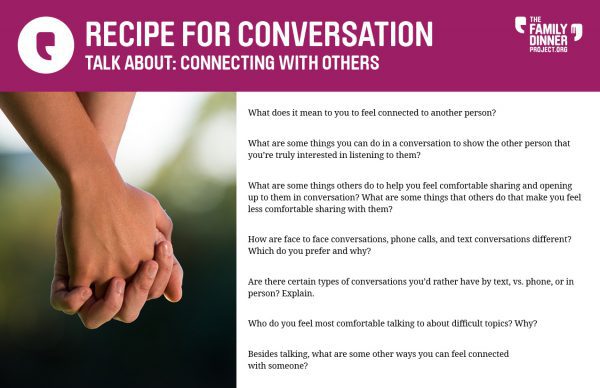Social connections are a necessary part of life. Loneliness and isolation are bad for both mental and physical health. But in an increasingly fast-paced, online world, it’s not always easy to tell whether kids (and adults) are truly connecting with others. As socializing and communicating continue to change with the times, it’s important to check in. How are kids understanding their relationships with others? How do they understand the value of different kinds of connections?
At the same time, adults can expand their own ideas about connecting with others. Child mental health experts Juliana Chen, M.D. and Tai Katzenstein, Ph.D. point out that parents generally think talking is the most valuable form of communication. However, they say that nonverbal communication and sharing — such as quietly engaging in an activity together — can also be powerful. When kids play video games together without talking, they may be connecting in a way that isn’t visible. Similarly, texting conversations or sharing internet memes might be a different, but equally valuable, way of communicating.
A mix of different communication methods and activities is likely to be healthy for most people. Parents can foster better connections through everyday routines like family dinners, where they can model positive conversations and good listening skills. But they can also try to understand kids and teens by stepping into their shoes. Understanding how kids think of their connections with others, and how they value different types of communication, can ease worries. It can also improve family relationships and bonding.
Try these conversation starters to help your family talk about connecting with others.

